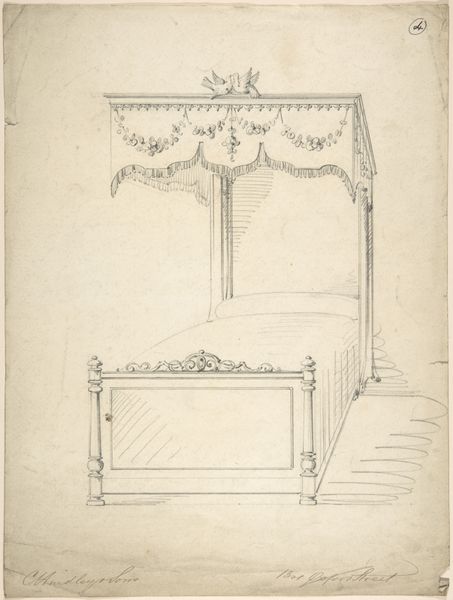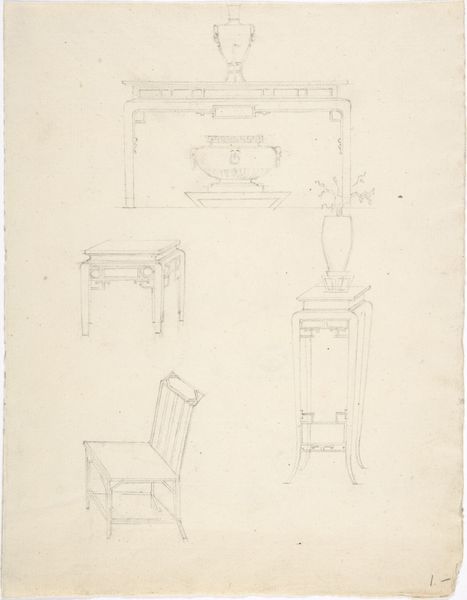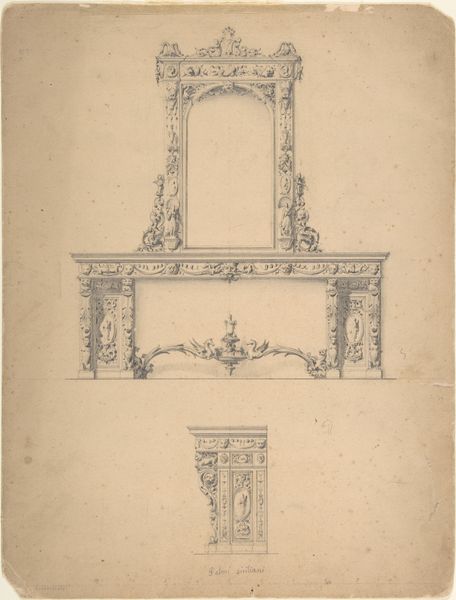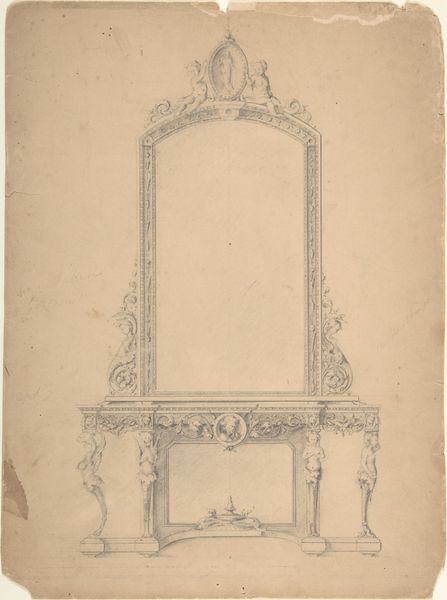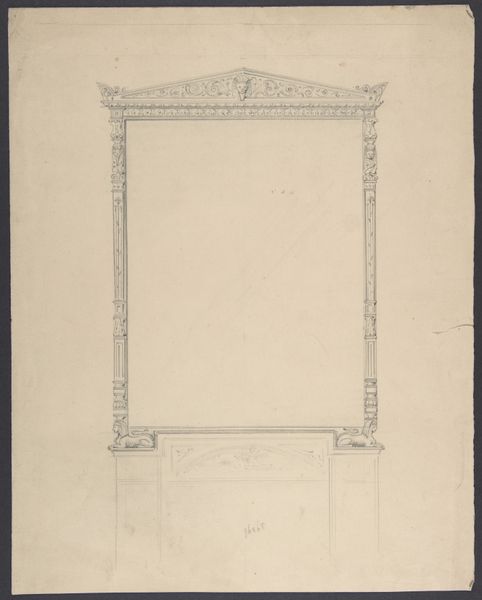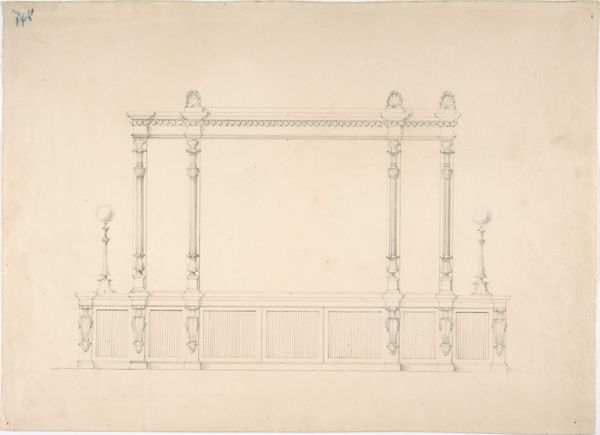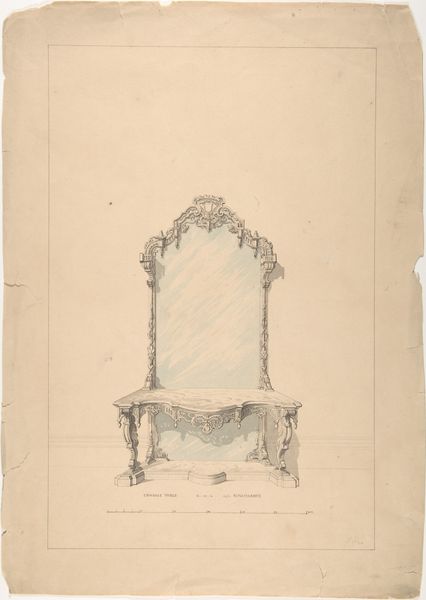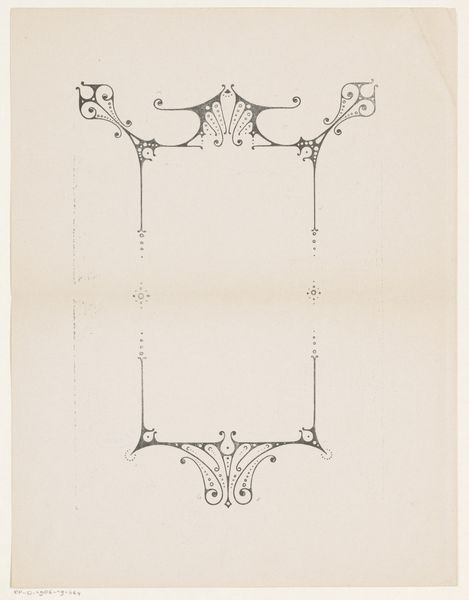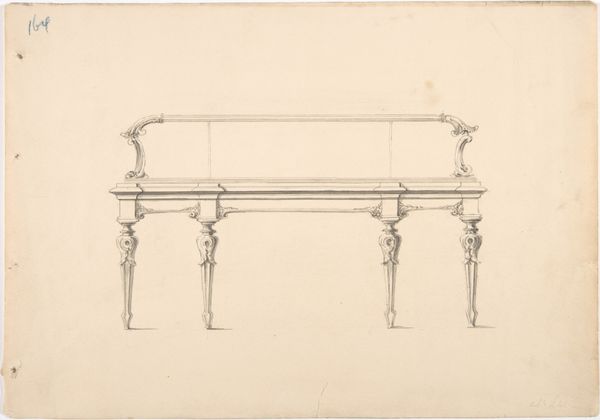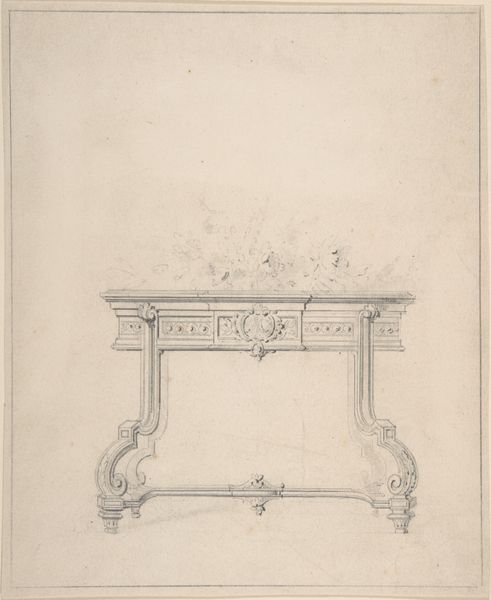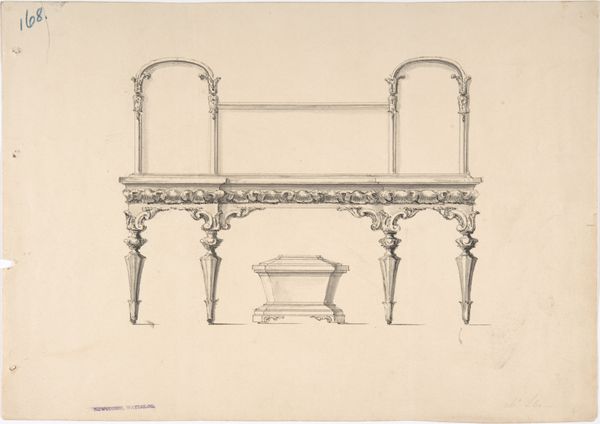
drawing, print, pencil
#
drawing
#
neoclacissism
# print
#
form
#
pencil
#
line
#
academic-art
#
decorative-art
Dimensions: Sheet: 12 5/8 × 9 5/8 in. (32.1 × 24.4 cm)
Copyright: Public Domain
Curator: This pencil and print piece, residing here at the Met, presents us with design studies for a couch, a chair, and a stool, dating roughly from 1800 to 1900. What jumps out at you? Editor: Faintly aristocratic... and a touch austere? Despite the decorative swirls, there's something so meticulously planned about it all, almost devoid of spontaneity. The subdued palette also gives it an echo of solemnity. Curator: Yes, the lack of vibrant color lends it an interesting formality. Its style is heavily informed by Neoclassicism. That movement celebrated clarity, order, and those echoes of ancient Greek and Roman design are pretty loud here, aren’t they? Editor: Absolutely! The symmetry is almost mathematical. And the decoration looks carefully measured, almost as if function and aesthetics were at war here! What kind of societal pressures might have informed these designs? Were the chairs functional pieces meant to reflect power and social order? Curator: I think the politics of the time played a large role. If these were created for nobility, they might have wanted to show refinement without appearing too decadent, especially when common people faced economic challenges. Imagine, sitting on something so deliberately ornate, almost a statement in itself! Editor: Right, it becomes less about comfort and more about symbolism. That precise symmetry you mentioned communicates control. The very act of creating these ornate designs says something about social status. Do we know the context of its display or who the intended owner was meant to be? Curator: Unfortunately, its creator is unknown, and without any other context, it remains tantalizingly anonymous, though clearly academic and masterful in execution. The 'form' is definitely a theme here, as seen in the decorative line work that delineates each piece. Editor: It does speak volumes, though. What strikes me now is how a simple sketch offers a window into not just design, but a whole social framework. From political aspirations to unspoken power dynamics, it whispers stories from another time. It really does become more than just furniture when one takes it beyond form, doesn't it? Curator: Precisely, making it so much more than meets the eye; revealing how much design embodies power, intention, and yes, maybe a tiny bit of societal performance too.
Comments
No comments
Be the first to comment and join the conversation on the ultimate creative platform.
